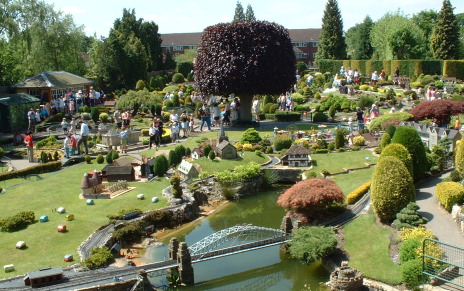We can learn a lot by looking at excellent examples of long-term maintenance outside IT.
One of my favourite places in the whole world is Bekonscot Model Village. Located in the town where I grew up about 20 miles west of London, Bekonscot is an excellent family attraction. It has an acre or two of detailed, high-quality models showing England in the 1930s. It has model seas and seaside villages, farms and towns. It boasts one of the UK's finest model railways weaving through the villages. It is exceptionally family friendly, relatively cheap admission, and good facilities.

I really enjoy myself every time I go to Bekonscot (which is quite frequently, because my young children love the trains). Even though I visit once or twice a year, there is always something new to see. Models are added and changed, though you never see signs of work in progress.
What impresses me most, though, is that Bekonscot is almost 80 years old. The England it depicts was current when it was founded.
Bekonscot does not show its age. It is one of the best examples of long-term maintenance that I have seen. The models are well-maintained. The trains are reliable. The facilities are clean. The gardens are fresh - the many bonsai trees have not overgrown their surroundings.
The village changes. New models are added, and old models renovated. From time-to-time, it has undergone significant transformations. For example, in the 1990s it stopped trying to keep up with real-world changes, and was remodelled to turn the clock back to the 1930s.
What can we learn from this excellent example of real-world maintenance?
If you get the chance, do visit Bekonscot (especially if you have young children). And have a think about how you could apply their approach to maintenance to the management of IT in your organisation.